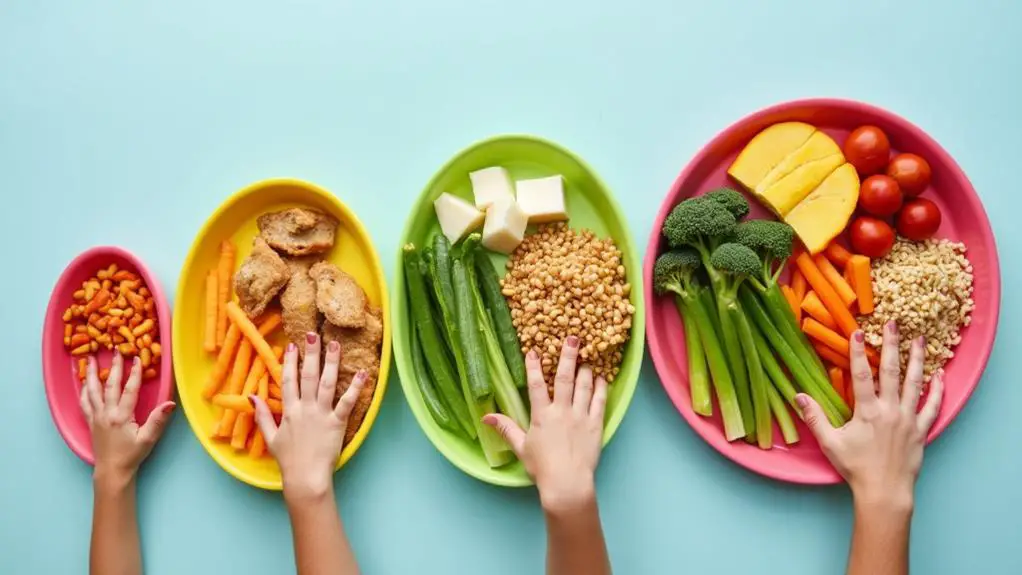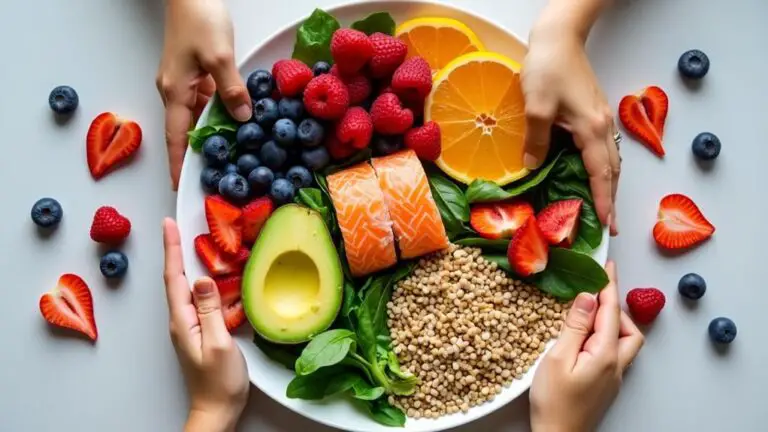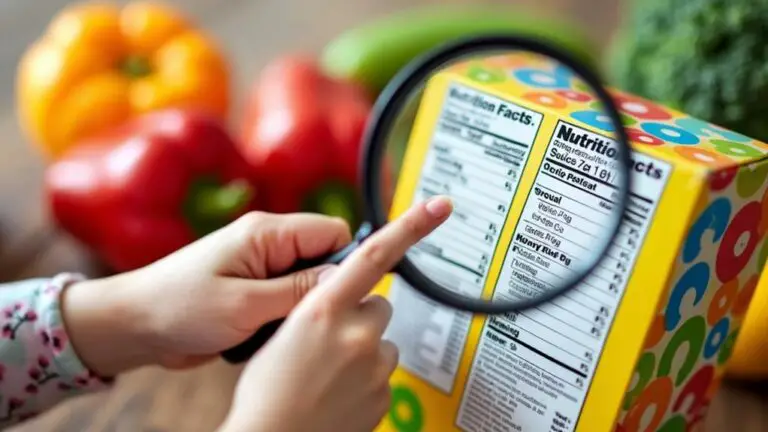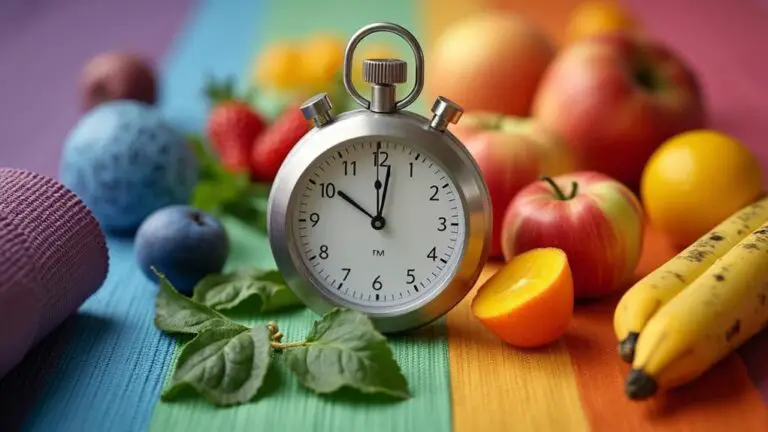Understanding Portion Sizes for Different Age Groups
Understanding portion sizes for different age groups is essential for maintaining a healthy diet. As you grow, your nutritional needs change, requiring adjustments to food portions. For children aged 1-4, start with smaller portions like 1/4 cup of grains and 1/2 cup of vegetables. Increase these amounts as kids reach 5-10 years old. Use visual guides like tennis balls or your palm to estimate appropriate serving sizes. Remember, portion sizes differ from serving sizes on nutrition labels. By balancing portions across food groups and considering age-specific recommendations, you'll guarantee proper nutrient intake. Discover more tips to make portion control easier for every age group.
Key Takeaways
- Portion sizes vary by age, with young children needing smaller amounts than older children and adults.
- Use visual guides like palm-sized portions for fruits and vegetables to estimate appropriate serving sizes.
- Nutrition labels provide standardized serving sizes, but individual portions may differ based on caloric needs.
- Balance food groups by offering appropriate servings of grains, proteins, fruits, vegetables, and dairy for each age.
- Adjust portions based on a child's appetite, growth, and activity level to ensure proper nutrition.
Defining Portion Vs. Serving Size
Confusion often surrounds the terms "portion size" and "serving size," but understanding their distinction is vital for maintaining a healthy diet.
Portion size refers to the amount of food you choose to eat, while serving size is a standardized measurement on Nutrition Facts labels. These labels provide recommended servings based on a 2,000-calorie diet, which may not suit everyone, especially children aged differently.
When making food choices, it's important to reflect on both portions and serving sizes. Healthy eating habits involve being aware of portion distortion, particularly in restaurants where servings often exceed recommendations.
By learning to differentiate between portions and servings, you'll be better equipped to manage your caloric intake and maintain a healthy weight.
Remember that children's needs vary, so adjust portions accordingly to support their growth and activity levels.
Age-Specific Portion Recommendations
As children grow, their nutritional needs change, requiring adjustments to portion sizes. For kids aged 1-4, a typical serving fits in their palm, including 1/4 cup grains, 1/2 cup vegetables, and 1/2 piece of fruit. Children 5-7 need slightly larger portions, while 8-10-year-olds can consume even more.
Here's a serving size chart to help you understand age-specific recommendations:
| Age Group | Grains | Vegetables | Fruit |
|---|---|---|---|
| 1-4 years | 1/4 cup | 1/2 cup | 1/2 piece |
| 5-7 years | 1/2 cup | 1/2-1 cup | 1 medium |
| 8-10 years | 1 cup | 1-2 cups | 1 medium |
Visual Guides for Portion Control
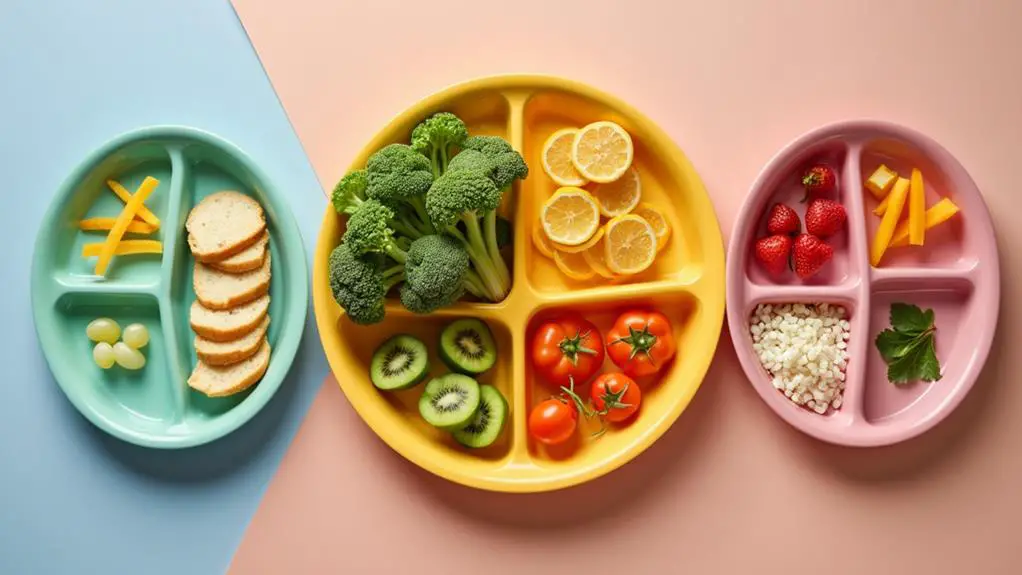
Visual guides serve as powerful tools in the quest for proper portion control. You can use everyday objects like tennis balls to represent appropriate serving sizes for fruits, making it easier to gauge portions for your children.
Child-sized plates and bowls naturally limit food amounts, promoting healthy eating habits. For fruits and vegetables, aim for a palm-sized portion to guarantee your kids get essential nutrients without overindulging.
When it comes to grains, visualize a serving that fits in a cupped hand. To reinforce these habits, keep portion size guides visible in your kitchen.
This strategy aids in daily meal planning and helps your family maintain consistent portion control. By utilizing these visual aids, you'll empower your children to develop a better understanding of appropriate serving sizes, setting the foundation for lifelong healthy eating practices.
Nutrition Labels and Portion Management
When it comes to nutrition labels, understanding their role in portion management is essential for parents. You'll find serving sizes on food packages, but remember these are often based on a 2,000 calories per day diet, which may not suit your child's needs.
Nutrition labels help you make informed choices about the amount of food you consume, but it's vital to differentiate between serving sizes and portion sizes. The right portion for your child might differ from the label's recommendation.
To manage portions effectively, focus on total calories, added sugars, and sodium when reading labels. By familiarizing yourself with these details, you can better monitor your child's intake and establish healthy eating habits.
Consider factors like age, gender, and physical activity when determining appropriate portions for your family.
Balancing Portions Across Food Groups
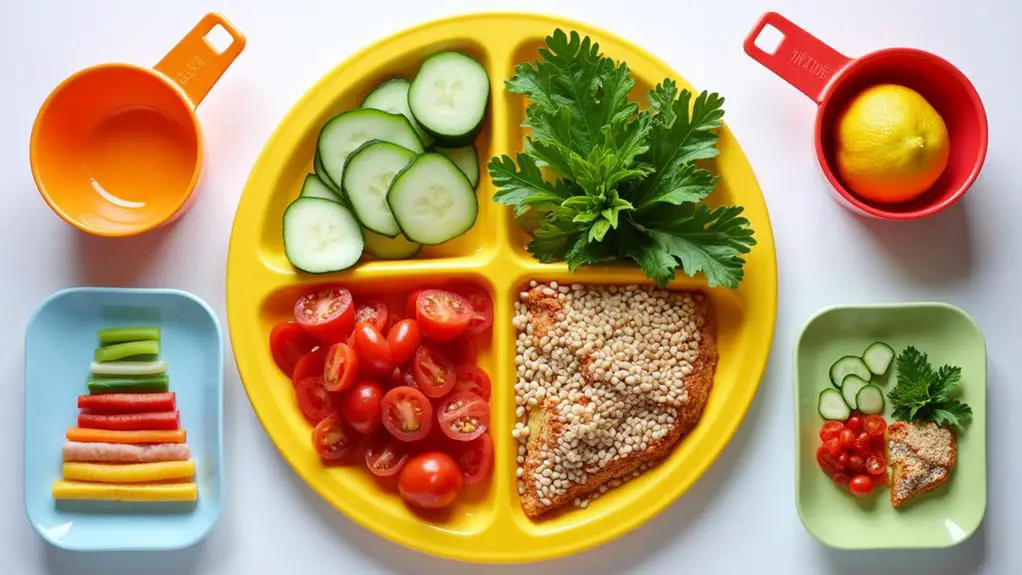
Balancing portions across food groups is key to guaranteeing your child receives proper nutrition. For children aged 1-4, aim to provide 2-3 servings of grains, 1-1.5 servings of protein, and at least 1 serving of fruit and vegetables at each meal.
As they grow, kids 5-10 years old should eat 4-6 servings of grains, 2-3 servings of protein, and 1.5 servings of fruit and vegetables daily.
Dairy products remain consistent across ages, with 2-3 daily servings recommended for bone health.
It's important to monitor and adjust portions based on your child's appetite and growth patterns. By providing the right amount from each food group, you'll guarantee your child gets the nutrients they need.
Conclusion
You've now got the tools to master portion control for all ages. Remember, it's not just about eating less, but eating the right amounts. Apply these tips, and you'll see a difference in your family's health. Take Sarah, a mom of three, who used the hand-size method to adjust portions. Within months, her kids were more energetic, and she lost 10 pounds without feeling deprived. Start small, be consistent, and watch your household thrive.

